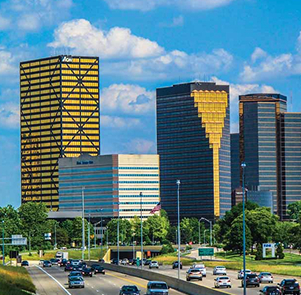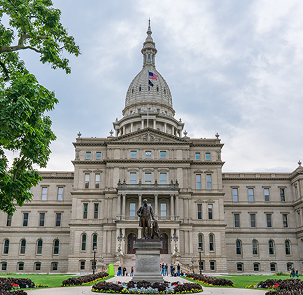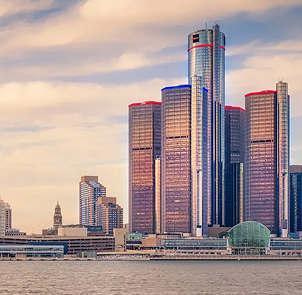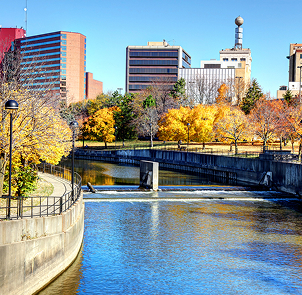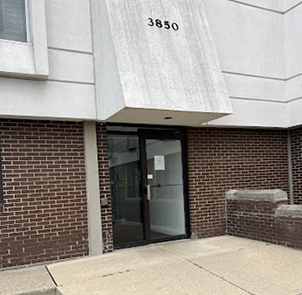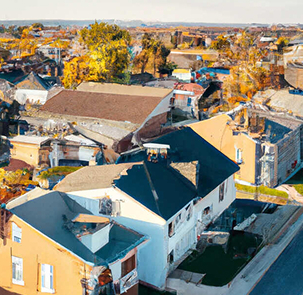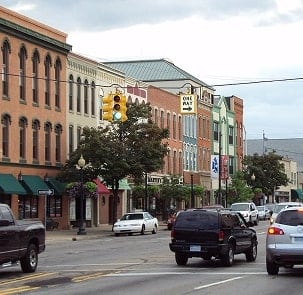Police Chase Car Accident Lawyer
For many people, police chases are anomalies and events that occur only on the local news stations. As such, news of them is often exciting and somewhat reminiscent of early 2000’s Hollywood films. While police chases undoubtedly make for good television, they are, in reality, quite dangerous, and not just for police officers and the fleeing drivers but also, for innocent bystanders.
Of the hundreds of police chases that occur each year, many result in either the fleeing vehicle, the chasing police cruiser or both hitting another, non-involved vehicle. Because chases often happen at high speeds, the damages that these collisions cause are often extensive and severe. In many cases, collisions that occur during high-speed chases result in death.
The dangers of high-speed chases to bystanders are well-documented, with more than one-third of chase-related fatalities being persons outside of the fleeing vehicles. In fact, because of the disproportionate number of bystander deaths that occur during police chases each year compared to the number of bystander deaths that occur during typical car crashes, nearly every jurisdiction — including Michigan — have placed several restrictions on police pursuits. Despite these restrictions, high-speed chases continue to happen every day, and innocent bystanders continue to lose their lives because of them.
If you or a loved one is the victim of a police chase, the law may entitle you to compensation. This is the case regardless of your role in the chase, and whether you were the pursuing officer, the fleeing driver or a bystander. A Michigan attorney who has experience with police chase car accidents can help you understand your rights and pursue the type of compensation that can help make you whole again.
Police Chase Statistics
Police chases happen more frequently than most people think. Per an estimate from a USA Today report, police officers across the United States chase tens of thousands of individuals each year. The outcomes of those chases are often disastrous. Below are a few stats to highlight just how dangerous police pursuits can become:
- During a nine-year period, a total of 2,654 police pursuits ended in crashes, which involved 3,965 vehicles and caused 3,146 deaths.
- Of those 3,146 fatalities, 1,088 of them were of people not in the fleeing vehicle.
- Altogether, 40 of the fatalities were police officers, 102 were non-motorists (bicyclists, pedestrians, etc.) and 946 were occupants of fvolved vehicles.
- When broken down, approximately 260 to 325 police chases end in fatalities annually.
- A broader study that began in 1979 and ended in 2013 suggests that bystanders and passengers account for nearly half of all chase-related deaths.
These stats do not account for the tens of thousands of injuries that police chases cause each year. There is no denying that police pursuits are dangerous, if not deadly. Sadly, many of the pursuits that cause crashes are unnecessary.
Why Police Chases Occur
Many law enforcement officers today recognize and appreciate the very real dangers of police pursuits. Yet, there are still the few who believe that chasing fleeing perpetrators helps to maintain law and order. Because of these few, police chases continue to occur all too frequently, and as a result of the most minor offenses. In fact, per a case study of three police departments, minor traffic offenses triggered as many as 51% of police pursuits. Between 35% and 43% of police chases were the result of felony offenses, with auto theft accounting for 18% of pursuits.
The Profile of a Typical Offender
It takes two parties to engage in a police chase. In addition to an overzealous police officer, a chase often involves an impaired male driver who does not have a valid driver’s license. According to the data, younger males are more likely to flee from police than older individuals and women. Many times, these young men are not wearing their seatbelts at the time of the chase, and they often have drugs or alcohol in their systems. In 61% of fatal pursuit cases, the pursued drivers did not possess valid drivers’ licenses.
Compared with drivers in other fatal crashes, pursued drivers are three times more likely to have a driver’s license suspension on their records. They are also two times more likely to have previous convictions for driving under the influence and 60% more likely to have prior traffic-related convictions.
How Police Chases Cause Car Accidents
Per a quote from the Justice Department in 1990, a police pursuit is “the most dangerous of all ordinary police activities.” According to government figures, police chases kill about as many people as justifiable police shootings each year, though they often escape national attention. So, what makes police pursuits so dangerous? There are a few factors that contribute to police chase accidents:
- Speeding: Speeding is perhaps the number of contributing factor in police chase accidents. At the times of their crashes, fleeing vehicles maintained a mean of 25.4 MPH over the speed limit. High speeds increase a person’s odds of losing control of the vehicle, a factor that can prove particularly dangerous when paired with the panic that surely surges through the fleeing driver at the time of the chase.
- Decreased Reaction Times: As the speed at which a person drives increases, the amount of time he or she has to react to situations decreases. Fleeing drivers often hit oncoming vehicles, vehicles that switch lanes, pedestrians that cross their paths and other obstacles simply because they do not have enough time to process and respond appropriately. The same is true of police cruisers that pursue fleeing drivers.
- Aggressive and Reckless Driving: According to science, drivers who are under stress tend to drive much more aggressively than those who are not and, therefore, much more likely to cause accidents. Drivers who are on the run are often under considerable stress. Moreover, they understand that a lot is at stake if the police catch them. Combined, the stress and urgency may cause fleeing drivers to drive not just aggressively but also, recklessly.
- Strain on Vehicle Parts: Manufacturers do not design standard passenger vehicles to travel at the speeds typical of high-speed chases. As a result, it is not uncommon for vehicle components to give out during pursuits. For instance, standard tires heat up at high speeds and frequently blow. If they do not blow, the stress of traveling so fast often causes them to tear apart.
Each of these factors alone is a known contributing cause of car accidents. Combined, they can prove deadly.
Restrictions on Police Chases in Michigan
As previously stated, because of the risks associated with high-speed pursuits, many jurisdictions have enacted policies that limit when officers may pursue vehicles and under what circumstances they must give up. Michigan State Police Official Order No. 10 details several pages’ worth of rules regarding police pursuits and emergency driving. Some key points from those pages are as follows:
- Though the department encourages officers to make all reasonable efforts to apprehend lawbreakers, it emphasizes that it is always better to delay an arrest or abandon a pursuit rather than risk harm befalling department members, the fleeing driver or innocent bystanders.
- Department members may not engage in a pursuit if they are operating department motorcycles, when non-department personnel or passengers are in the patrol vehicle or if any of the patrol vehicle’s emergency functions are inoperable (such as lights and siren).
- Officers may only engage in a vehicle pursuit if the fleeing driver is driving the wrong way down a freeway or if they have reasonable cause to believe that the fleeing driver committed a felony.
- Officers may not automatically engage in a vehicle pursuit merely because they suspect the driver committed a felony. Rather, officers must consider several factors before deciding to engage in a chase, including the severity of the crime; the type, volume, speed and direction of the surrounding traffic; the fleeing driver’s actions; the officer’s familiarity with the area; and road conditions, to name a few.
- If an officer decides to engage in a pursuit, he or she must operate the patrol vehicle’s emergency functions during the entire ordeal. He or she must also notify dispatch of the pursuit, provide all relevant details and request permission to continue the chase. If, at any time, dispatch says to terminate the pursuit, the officer must do so.
- An officer must terminate a pursuit on his or her own if certain conditions or circumstances arise. One such circumstance is when the pursuit threatens the safety of the officer or officers, the fleeing driver and his or her passengers, and/or the public. Additionally, an officer must abandon a pursuit at any time the fleeing driver’s identity becomes known.
These are just a few of Michigan’s laws as they pertain to police chases. If you are the victim of a police chase car accident in The Mitten, an attorney with experience with these types of accidents can help you thoroughly understand the law and how it may work in your favor.
Who Is Liable for Injuries You Sustain in a Police Chase?
Who may assume liability for injuries you or a loved one sustain in a Michigan police chase car accident depends largely on who was mostly at fault. In many cases, both the fleeing driver and the police department will share liability.
When the Fleeing Driver Is At-Fault
By default, a fleeing driver will assume all or partial responsibility for a chase-related accident simply for triggering the pursuit in the first place. The actions a fleeing driver engages in during a pursuit are also likely to establish his or her negligence, as said actions are likely violations of the law. Examples of illegal maneuvers in which a fleeing driver may engage include running red lights, blowing through stop signs, driving the wrong way down a one-way street, weaving in and out of traffic and speeding.
Given the reckless behaviors of most speeding drivers, there is little doubt that the fleeing driver in your accident case is at least partially at-fault for the incident. Unfortunately, though there is little room for dispute, the at-fault driver’s insurance company may refuse to pay for your damages on the basis that the driver’s insurance policy does not cover inherently illegal activities. This is assuming, of course, that the fleeing driver has insurance in the first place. Whether the driver has insurance or not, you may need to file a claim against the driver him or herself.
When the Pursuing Officer (and Department) Is At-Fault
There is a strong possibility that the pursuing officer and his or her department will also share liability for your losses. Per state law, officers must terminate a pursuit as soon as it becomes evident that continuing the chase will result in harm to themselves, bystanders or the fleeing driver. The same legal code also explicitly states that a department cannot reprimand an officer for terminating a pursuit once it becomes dangerous. If an officer continues a chase regardless of the obvious danger it causes, and if the pursuit results in an accident that cause injury or death, there is little doubt that the department will assume liability for the officer’s recklessness.
If you plan to file a claim against the at-fault officer and his or her department, it is important that you act fast. Unlike with a personal injury claim against a civilian, which you have two years to file, you have just six months to make a formal complaint against a state entity. If the state rejects your claim, you then have an additional two years to file a lawsuit.
Why Work With a Michigan Police Chase Car Accident Lawyer
Police chase accident cases often contain several moving parts. They are also rarely cut-and-dry, meaning accident victims often struggle to obtain fair and full compensation. Yet, given the severity of the injuries individuals sustain in these types of accidents, full compensation is crucial to one’s recovery. If you or a loved one are the victim of a police chase accident in Michigan, you have a long road to recovery ahead of you. You do not have to, and should not, travel that road alone. Contact an attorney with experience in these types of cases for help protecting your rights and interests. Contact Mike Morse Law Firm today.

Client Success stories
“This firm’s professionalism far exceeds the normal verbal and written communications expected from a law office. They could not have done a better job with the matters concerning my case and I would highly recommend them.”
– Melvin Johnson Highland Park, Michigan
Our clients Say it the best
★★★★★
Melvin Johnson“This firm’s professionalism far exceeds the normal verbal and written communications expected from a law office. They could not have done a better job with the matters concerning my case and I would highly recommend them.”
★★★★★
Hattie Spencer“When the attorneys at the Mike Morse Law Firm represented me, we were not just a number, we were family. They really cared about what I was going through. I could not have asked for better people to work on my case.”
★★★★★
Terrence Williams“I think very highly of Mr. Morse’s office and would recommend them to anyone. It starts with the great feeling you get when you come to the office for the very first time and it has continued with the excellent customer service they always provided. I don’t even need to ask questions because the attorneys and paralegals are so on top of their jobs. They have always been there for me. I have a warm and friendly feeling anytime I stop in. It feels like home.”
